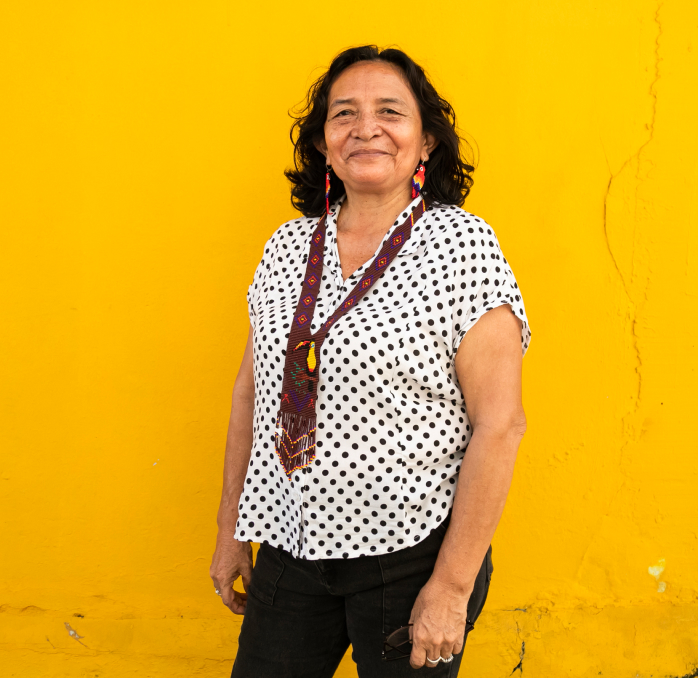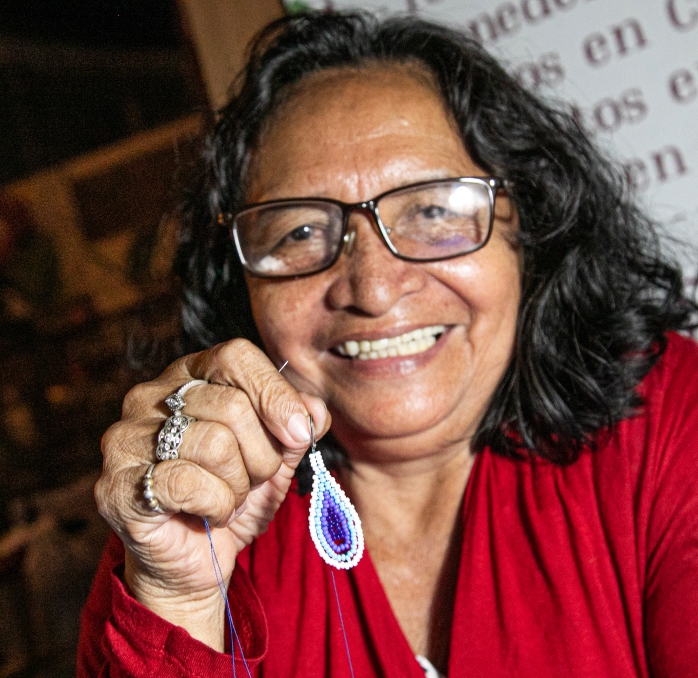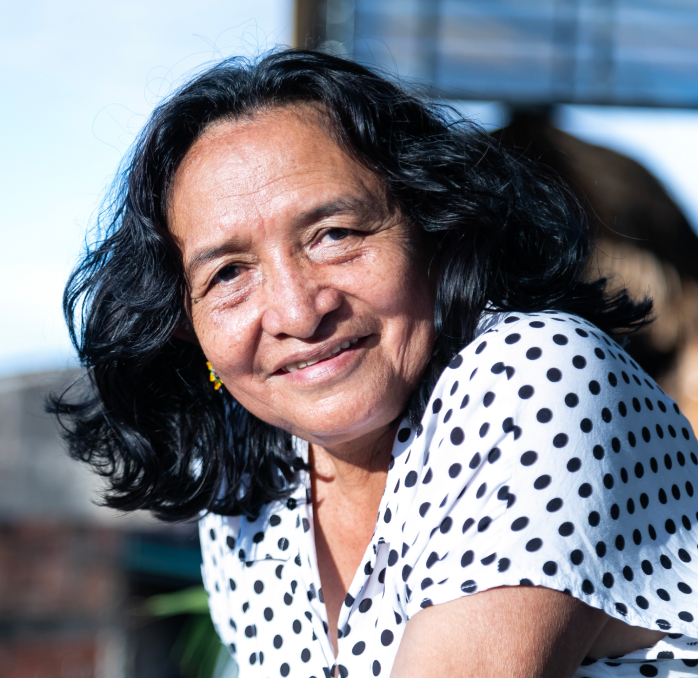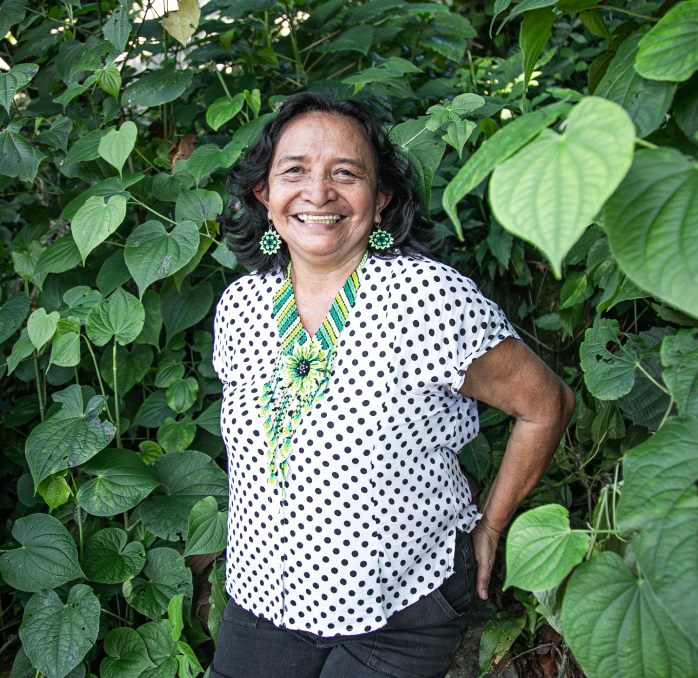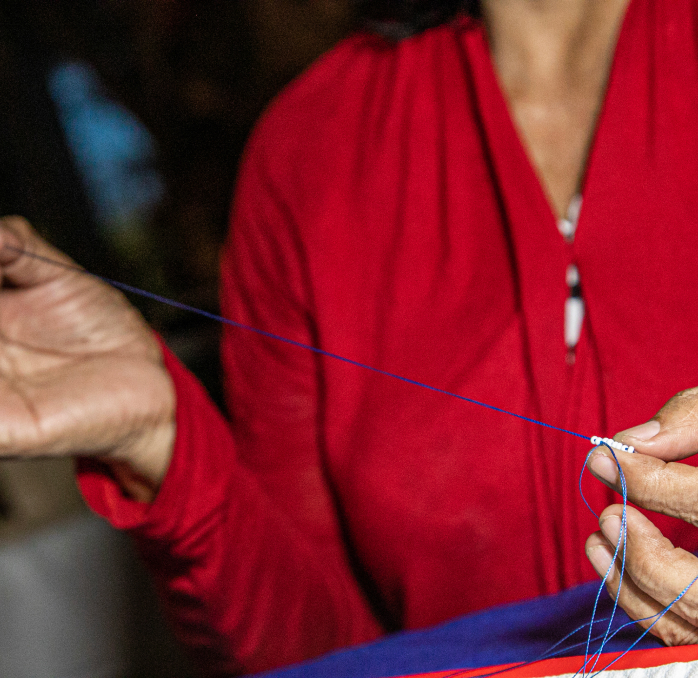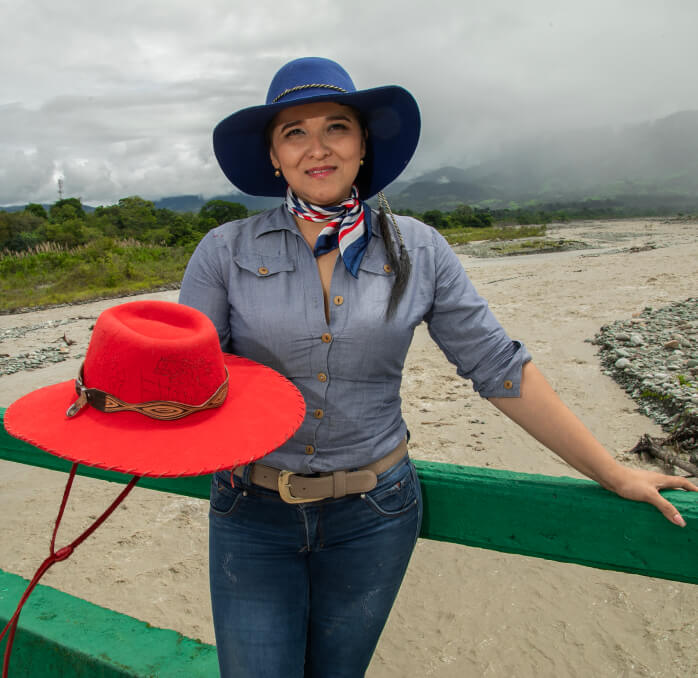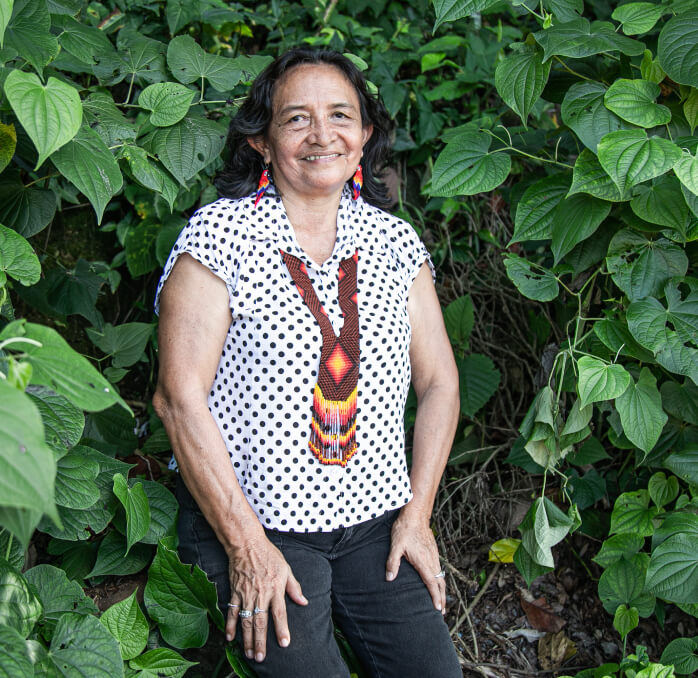Graciela Edilma Barbosa Teixeira
Workshop: Grupo artesanal indígena AMIV CORPIDOAC
Craft: Tejeduría
Trail: Meta Route
Location: Villavicencio, Meta
Graciela and her family certainly have a deep understanding of communal living. Not only because her Guanano group consists of 18 clans, but also because she shares her daily life in Villavicencio with people from another 16 indigenous groups, including Tukanos, Curripakos, Pirapatuyos, Tarianos, Arapasos, and Yeral, who live in close proximity to the Brazilian border. In fact, this close relationship with Brazil evokes memories of her own childhood when she and her grandmother, María Luisa Aguilar, merely had to cross the Vaupés River to arrive in Colombia.
In the present, this warm-hearted woman sustains herself as an artisan. When she reminisces about her childhood and how she stubbornly told her grandmother that she would never take up weaving, it brings a hearty laugh. She had once declared to her grandmother that she aspired to be a typist, just like the nuns she encountered during her education at the Catholic boarding school. Of course, her wise and patient grandmother, the matriarch of their clan, was not thrilled with this idea and simply waited for her granddaughter. Her patience was rewarded when, just three months after entering the Catholic boarding school, Graciela had a change of heart. She realized she was not cut out for a life centered on prayer, and she informed her grandmother that she was eager to learn everything she wanted to teach her. This was the beginning of her journey into the art of crafting with beads and cumare, materials that María Luisa used to create bags.
Many years have passed for this woman, who understands that respecting each person’s way of life is the key to harmonious coexistence. As a result, she has learned the languages, customs, and recipes of each of the communities that share the territory with her. Thanks to this, they not only live together harmoniously but also protect one another, their products, and their heritage. Like many other indigenous communities in the Orinoquía, she was displaced by violence. She vividly remembers those harrowing years when the forced recruitment of young Wanano people by illegal groups compelled her to leave in 2016, without even being able to bid farewell to the indigenous reservation where she had lived.
Adapting to city life was not easy for her or her husband, Reinaldo. They were unfamiliar with the ways of this new environment and lacked the necessary resources, so they worked tirelessly every day. However, tradition has a way of finding its place in the lives of many, and she eventually rekindled the gift her own hands held. One day, one of her children asked her to bring a gift for his school teacher the next day. Since they had no money, she found some thread and wove a small bag. Fortunately, it turned out beautifully, and as more people saw it, they placed orders for additional bags. This certainly helped their household economy and prompted Ramiro to learn the craft and assist in fulfilling orders.
She used to weave while simultaneously studying to become a nursing assistant. Later, she worked for many years at a Health Promotion Company specializing in indigenous healthcare. However, the call of her craft was stronger, and today, she spends her days weaving bags and creating traditional Wanana beaded jewelry pieces like necklaces and bracelets depicting her people’s symbols. She explains how, as an originally water-based community, the color blue predominates in her bags, necklaces, and bracelets. The faded shades symbolize transitions of light, while red and orange designs represent the sunset and the sunny season. There’s even a vibrant yellow design that signifies a radiance so brilliant it can blind their enemies.
For the Wanano people, wearing their garments, necklaces, and bracelets on their wrists and ankles provides protection against negative energies and thoughts. This is the reason behind the eyes depicted in their designs—they guide their steps towards goodness. With this trust in her path, she also guides her community and imparts the tools and wisdom to her own daughter, Sandra Milena, ensuring the preservation of their cultural legacy.
Craft


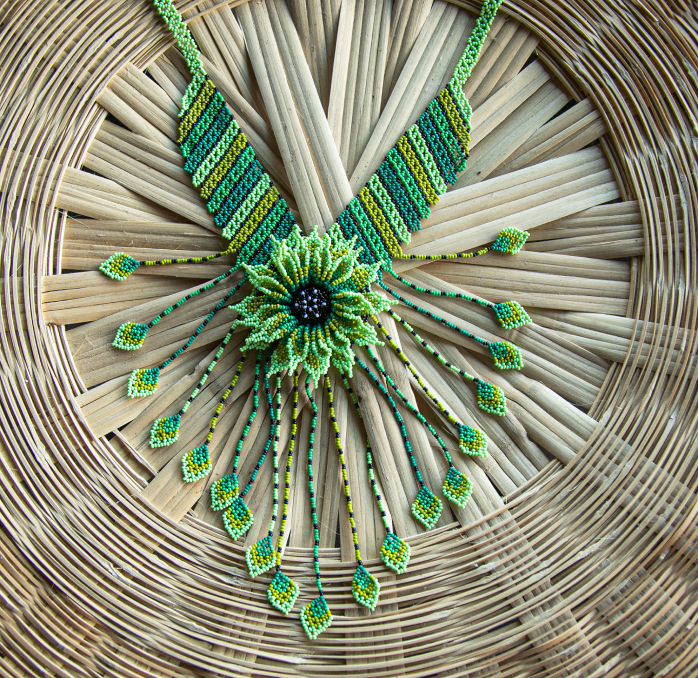
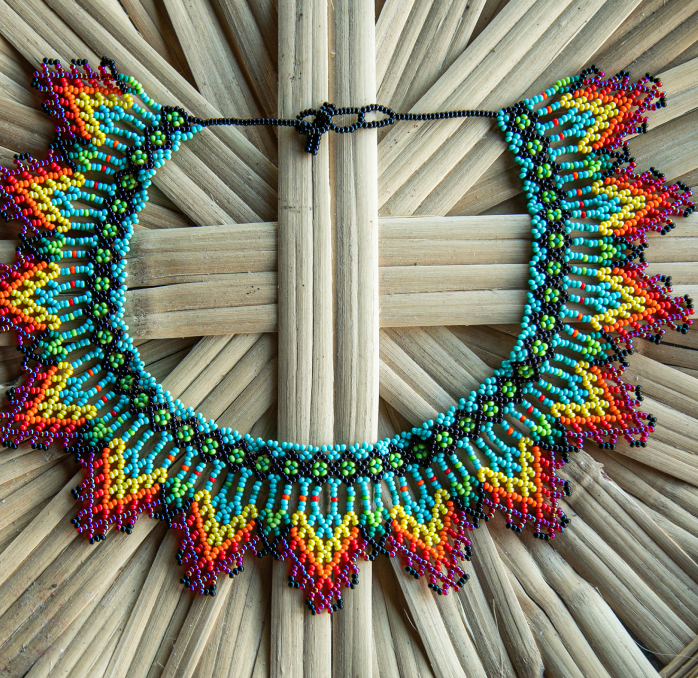

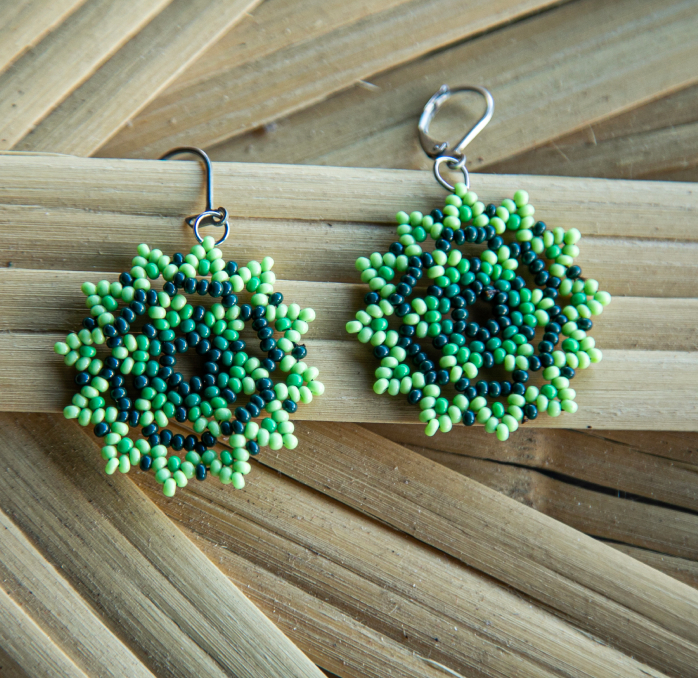
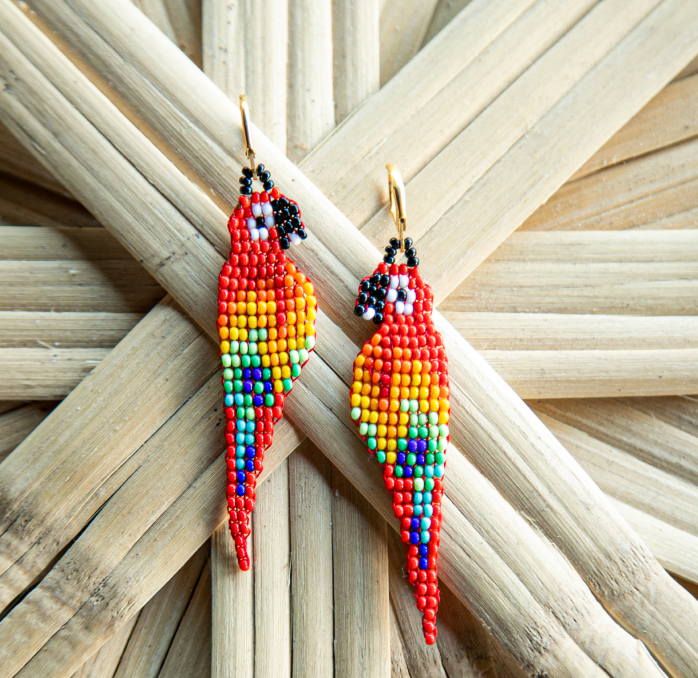

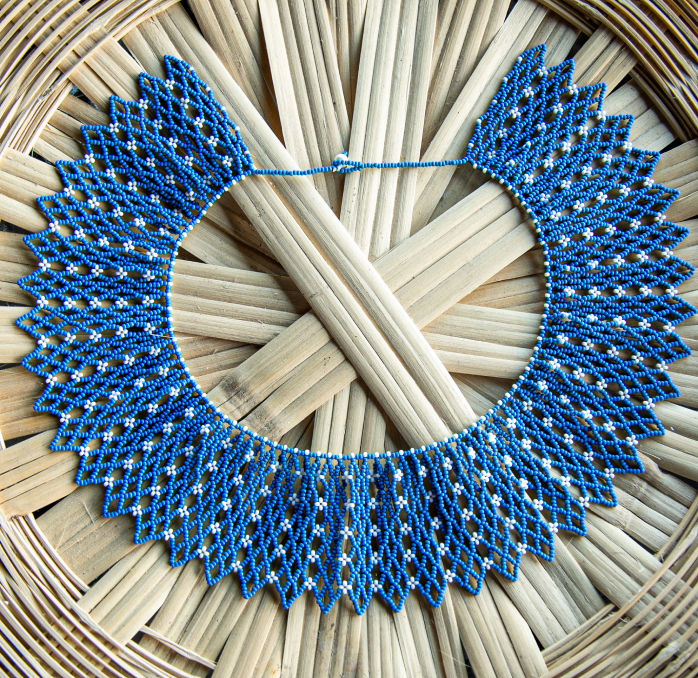
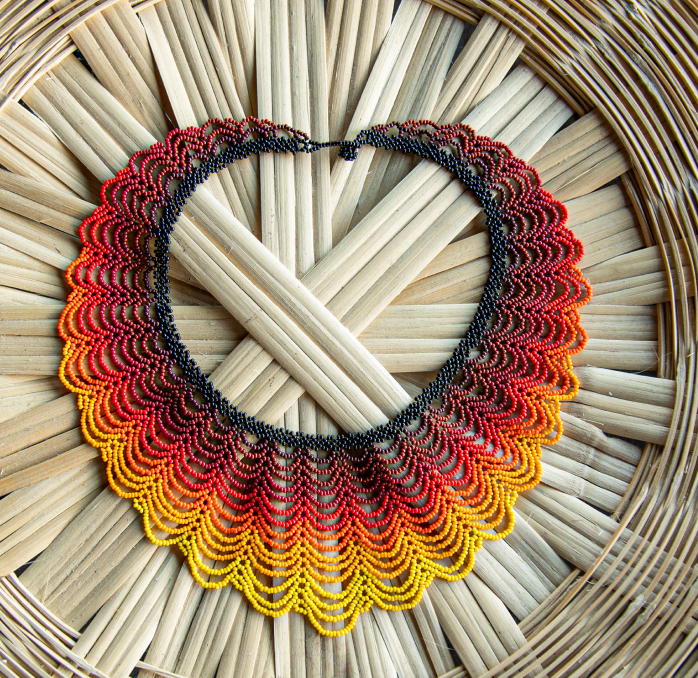










Artisans along the way
Artisans along the way
No puede copiar contenido de esta página








































